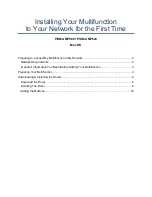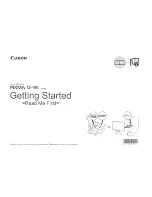
Copyright © 2006 MCA Internet, LLC dba BERTL.
22 August 2006
All Rights Reserved. The license under which this document is made available and applicable law prohibit any reproduction or further transmission of any portion of this document. This
document may only be viewed electronically through the www.BERTL.com Web site and may not be stored in electronic or hard copy format. Any reproduction of trademarks is strictly
prohibited. BERTL accepts no responsibility for any inaccuracies or omissions contained in this document.
Page 23
Savin C2525
ACS Text: While printing documents in the text mode, we saw very good
reproduction of both fonts and lines. BERTL recommends this mode for
these types of jobs.
Text/Photo: Fonts and fine lines also reproduced very well in text/photo
mode, with only the very finest lines showing a slightly less sharp appear-
ance than the 1-bit text mode.
Photo Mode: This mode was not as quite as clear as the text or text/photo
mode, with fine lines breaking up earlier than text/photo mode. Output was
better than some other devices we have tested recently.
Image Quality
The Savin C2525 comes with text, text/photo, and photo
modes to allow the user to capture and reproduce
different image types. BERTL’s testing included all three
modes with a wide range of copy originals to look for
strengths and weaknesses of the device.
Image quality was to a high standard across a wide range
of original types.
As with most devices, the text/photo mode was the
default setting for the device and the mode that offered
the best overall image quality across the spectrum of
copy jobs.
The text mode, which captures information in two-bit
black or white mode, is best used in text only or fine line
situations and delivers crisp output. However, as the
images on page 24 illustrate, the two-bit capture mode
does not fare as well in more graphic copy jobs where
grayscales and halftone reproduction are required.
Photo mode, on the other hand, uses a halftone
rendering algorithm that produces high quality
reproduction of photographs. However, it does not fare as
well on text and fine lines with poor legibility.
Text/photo uses an algorithm that sits between the more
extreme text and photo modes. This is ideal for
documents with a mix of text and graphics, as can be
seen in the examples.
Copy
Greyscale reproduction in black and white mode: This produced high
quality output across all shades
Greyscale reproduction in ACS mode: This produced good output across
all shades with only very marginal hints of color due to use the composite
black, with 50 to 75 percent showing a slight yellow tint. However, 25 to
50 percent shades reproduced very well with little no color tint that
plagues many rival units.
















































